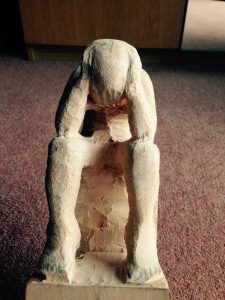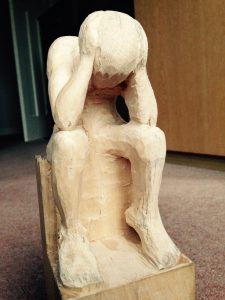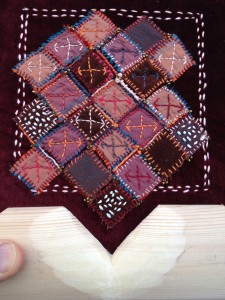Yep, back at college this week and introduced to a new tutor, Debi, who’s affinity is to textiles in all forms. She took the 1st year’s through the technique of felt making and their will be developments in felt making next week. However, is my first piece …
…. and a follow-up piece using a ‘resist’ layer.
The resist [in this case it was a bit of bubble wrap] is placed between layers of wool before the felting process begins. Once felted there are two distinct layers in part of the piece, which allow one to cut into the felt to reveal, say, lower layers, or pull up parts of the upper – as I have done in the left hand photo; you might just notice the colours of wool in the cut edge. I suppose one could have a very thick felt with multi resist layers….
I shall try and keep up to date on postings and hopefully have enough pictures.



















































